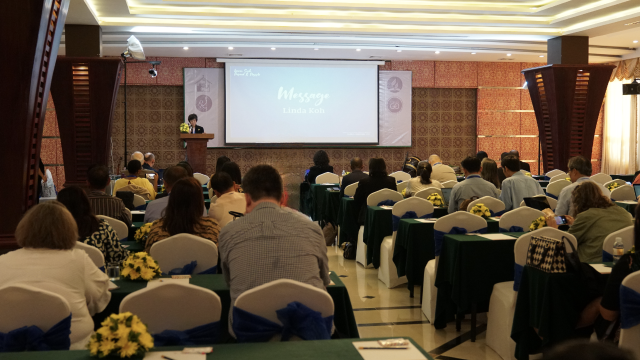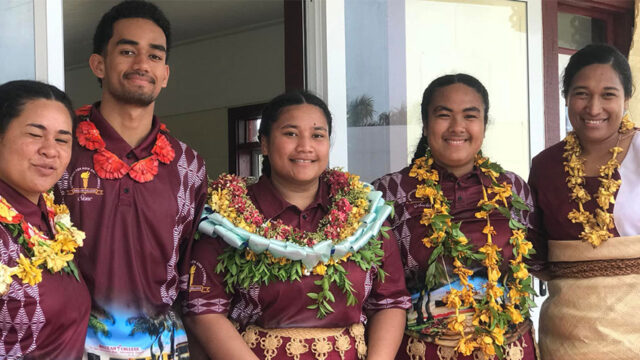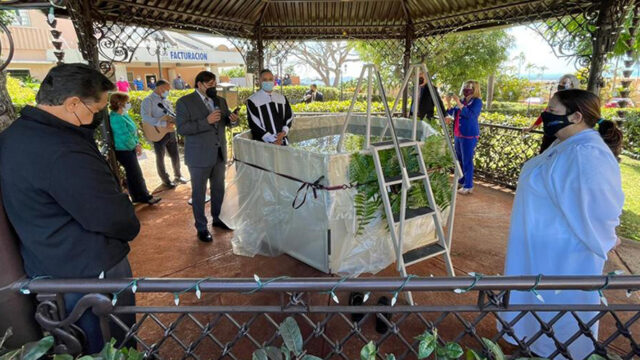Adventist Mission director Gary Krause describes new emphasis on frontline work.

“Recently, Montgomery County in Maryland was named the most religiously diverse county in the United States,” Adventist Mission director Gary Krause said on October 13. Addressing the General Conference Executive Committee (EXCOM) members at the 2024 Annual Council of the Seventh-day Adventist Church, Krause reminded church leaders that the General Conference of Seventh-day Adventists—the venue for the annual business meeting in Silver Spring—is located within the boundaries of Montgomery County.
“Here we are in… a traditionally Christian country,” Krause said. “But please note that within about a 20-minute drive of this building you’ll find at least 10 Hindu or Jain temples… and at least 13 mosques and Islamic centers. In fact, just up the road from us here is an international Muslim TV station.”
Due to forced displacements, voluntary across-borders migration, and internal migration from rural to urban areas, diversity of ethnicity and religion has substantially increased in many places, Krause explained.
A Rationale for Mission Refocus
According to Krause, the current situation provides a rationale for the Mission Refocus that the Adventist Church faces today in the 10/40 Window (a region of the world where most people live but where Christians are a minority), the post-Christian Window, and the Urban Window. Almost every church region has been impacted by these windows to some extent, he said.
The Mission Refocus windows are mission challenges but also mission opportunities, Krause said. He shared some data about frontline missionaries, including 2,500 Global Mission pioneers, 79 so-called “tentmakers” in the 10/40 Window, and 774 Adventist Volunteer Services volunteers.
Yet there’s much more that could be done, Krause said. As an example, he mentioned that VividFaith, the church office that connects prospective volunteers with volunteer positions around the world, has a list of more than 17,000 interests, but less than 800 volunteers. “Fewer than 800 versus 17,000,” Krause said. “Can you imagine the energy, the youth, the creativity represented by that number of more than 17,000? Imagine what a difference they could make if unleashed into service! What a difference to churches, schools, communities, evangelistic programs, health initiatives, struggling entities in your region of the world. But for whatever reasons, we’re not harnessing that goldmine of young, eager, willing talent,” Krause lamented.

A Geographical Shift
As world church divisions adjust their budgets to assign more funds to frontline missionaries, the world church is processing names of missionaries willing to tackle the greatest challenges. Some regions are also enlisting the assistance of other regions. “Eight sponsoring divisions and unions are funding missionaries and mission initiatives in 10 other divisions and unions,” Krause reported.
He also explained that for more than 100 years, the North American Division carried the church’s world mission on its shoulders. “And it continues to be a powerhouse for the mission of the world church,” Krause said. “But thanks in large part to its efforts, the rest of the world church is now increasingly rising to the mission challenge. In a fluid, moving, ever-changing world boundaries are being broken down. But as a church, we remain united in our mission.”
The South American Division Example
Krause shared how the South American Division (SAD) explains this shift within its territory. “In the past, our questions were: Who would come, and how they could help us?” SAD secretary Edward Heidinger told Krause. “Many missionaries and resources were sent to our land, and now we are harvesting the fruits of these sacrificial efforts,” Heidinger explained. “Consequently, our questions now are: How could we help? Who will go?”
Heidinger shared how recently, the SAD invited leaders from other territories to help select 24 more missionary families who will receive SAD funding and be sent out as part of their contribution to Mission Refocus. “Other divisions and attached unions have also caught the vision and already 12 divisions and unions are committed to sending 293 missionaries and 4,135 volunteers in the next five years,” Krause said.
In the Post-Christian Window
One of the first Mission Refocus missionaries to go into the field will be Robert Folkenberg III, who in November will move with his wife and young daughters from Canada to Denmark to focus on church planting in that secular post-Christian Window.
For the last four and a half years, Folkenberg had been a church planter in Squamish, British Columbia, a community known for its high levels of secularism. “When we moved there, there was not church,” he said through a video message. “It was a difficult but incredibly rewarding challenge to spend the last years pouring into a new church that now exists.”
Folkenberg explained that through that experience, he and his family have become “very passionate about the potential and power of church planting.” Now, with God’s help, they expect to repeat that experience in post-Christian Copenhagen. “Church planting allows us the opportunity of connecting with people that otherwise would never come to a church,” he said. “Thank you for supporting missionaries like us.”

Adventist Members per Population
Krause concluded his report by noting that there are 27 countries with at least one Adventist for every 20 people, but except for Zambia and Rwanda, most of them are islands. With more than one million baptized members, Kenya is among the countries where the Adventist Church is strong, as are the Philippines (nearly 1.5 million baptized members), Zambia (1.4 million baptized members), and Brazil (1.8 million baptized members).
However, challenges remain, Krause said, as there are six countries with no Adventist presence: Iran, North Korea, Afghanistan, Syria, Yemen, and Somalia. They amount to nearly 230 million people, “or 10 times the membership of the Seventh-day Adventist Church.”
This awareness should inform how church leaders in the Adventist Church navigate the future of Mission Refocus, Krause said.








